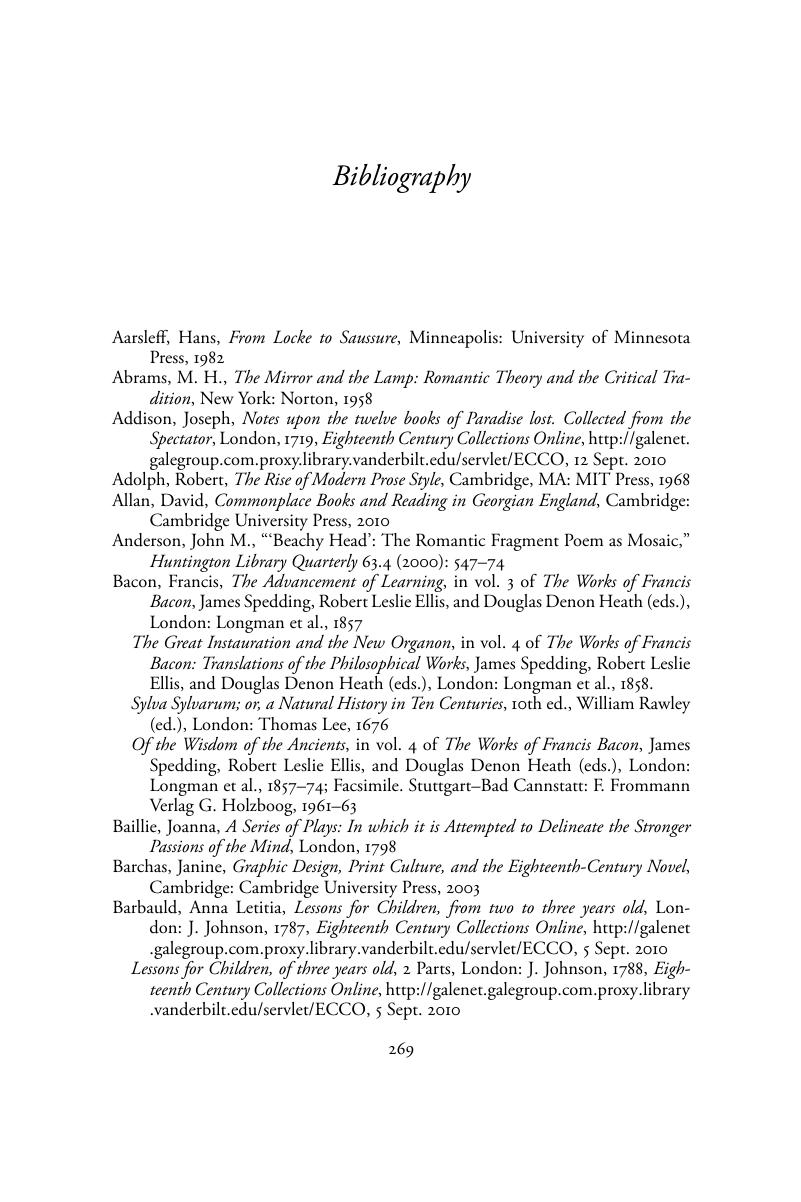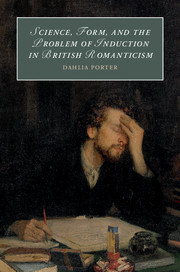Book contents
- Science, Form, and the Problem of Induction in British Romanticism
- Cambridge Studies in Romanticism
- Science, Form, and the Problem of Induction in British Romanticism
- Copyright page
- Dedication
- Contents
- Figures
- Acknowledgments
- Abbreviations
- Introduction
- Chapter 1 Knowledge–Mind–Text
- Part I Making Texts
- Part II Making Minds
- Bibliography
- Index
- Cambridge Studies in Romanticism
- References
Bibliography
Published online by Cambridge University Press: 14 June 2018
- Science, Form, and the Problem of Induction in British Romanticism
- Cambridge Studies in Romanticism
- Science, Form, and the Problem of Induction in British Romanticism
- Copyright page
- Dedication
- Contents
- Figures
- Acknowledgments
- Abbreviations
- Introduction
- Chapter 1 Knowledge–Mind–Text
- Part I Making Texts
- Part II Making Minds
- Bibliography
- Index
- Cambridge Studies in Romanticism
- References
Summary

- Type
- Chapter
- Information
- Publisher: Cambridge University PressPrint publication year: 2018



